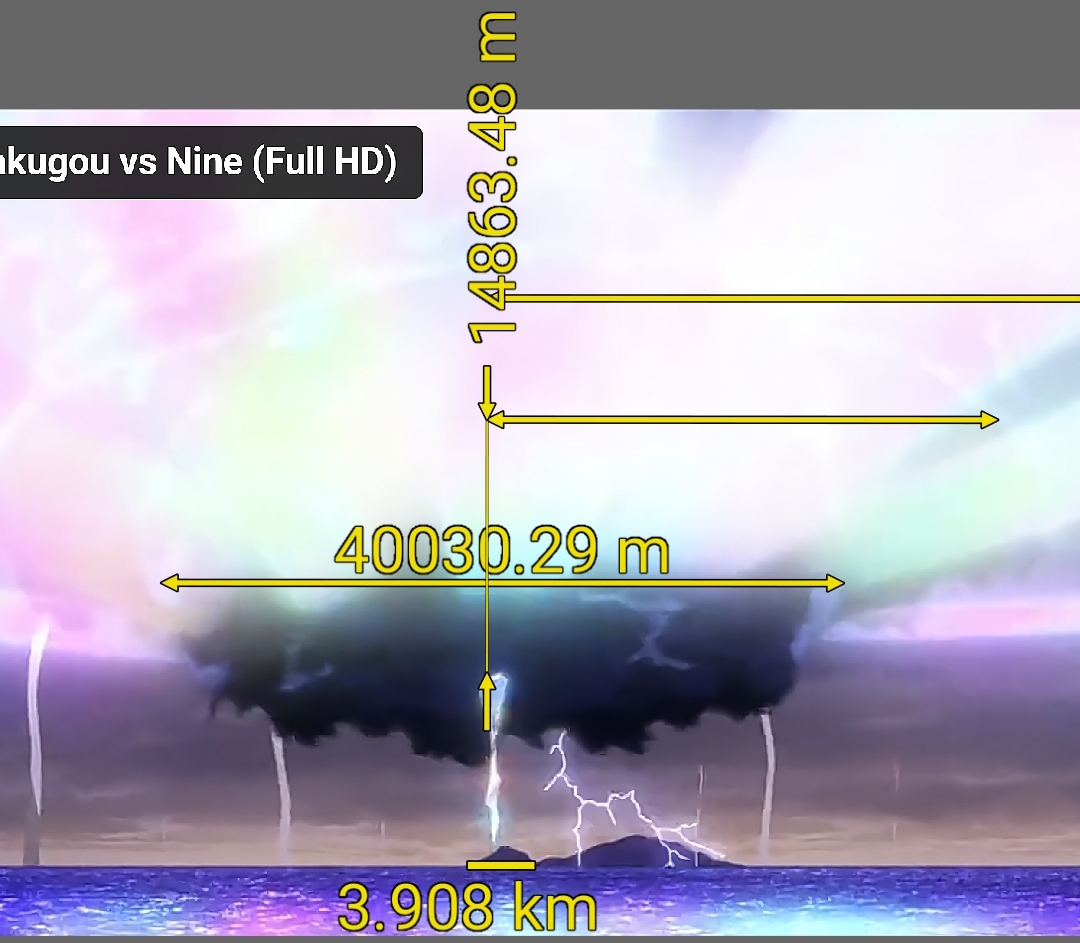Using 1 frame should be fine here, it's not like we could accurately measure the distance it's spinning over an extended distance with such an angle.
Also the expansion speed it's not even consistent, it was getting faster as well making the use of longer time-frames inaccurate.
Also the expansion speed it's not even consistent, it was getting faster as well making the use of longer time-frames inaccurate.


Instead of using 1 frame I used 12 or 0.5 seconds. However I'm not certain if this is correct due to the storm expanding at the same time and the fact that the white line thing I'm using to find the distance of the clouds isn't moving in a straight line but in a circle. Meaning the distance I get would be incorrect.
Like imagine starting at a circle horizontally, it'd look like a line. The two end of that "line" at the left and right are actually further away from the camera than the middle of the line. This change becomes even greater since the storm is also expanding in size, which would mess with the distance gotten even more.
That's why I think using a longer timeframe would give a more inaccurate result.
The speed result didn't even change that much going from 48225.75 m/s to 42020 m/s. So I think using 1 frame here would be more accurate. Do you agree or disagree?